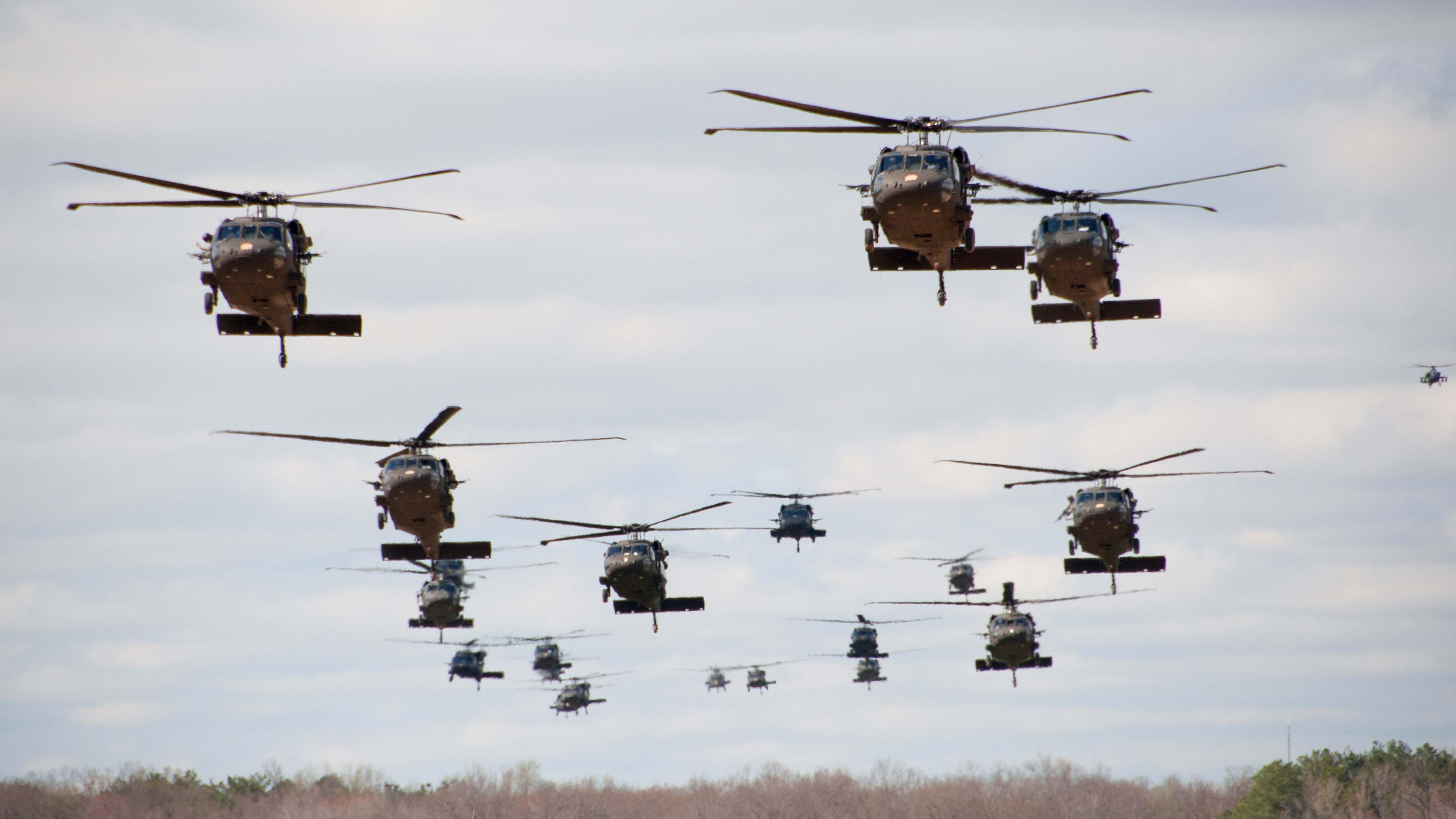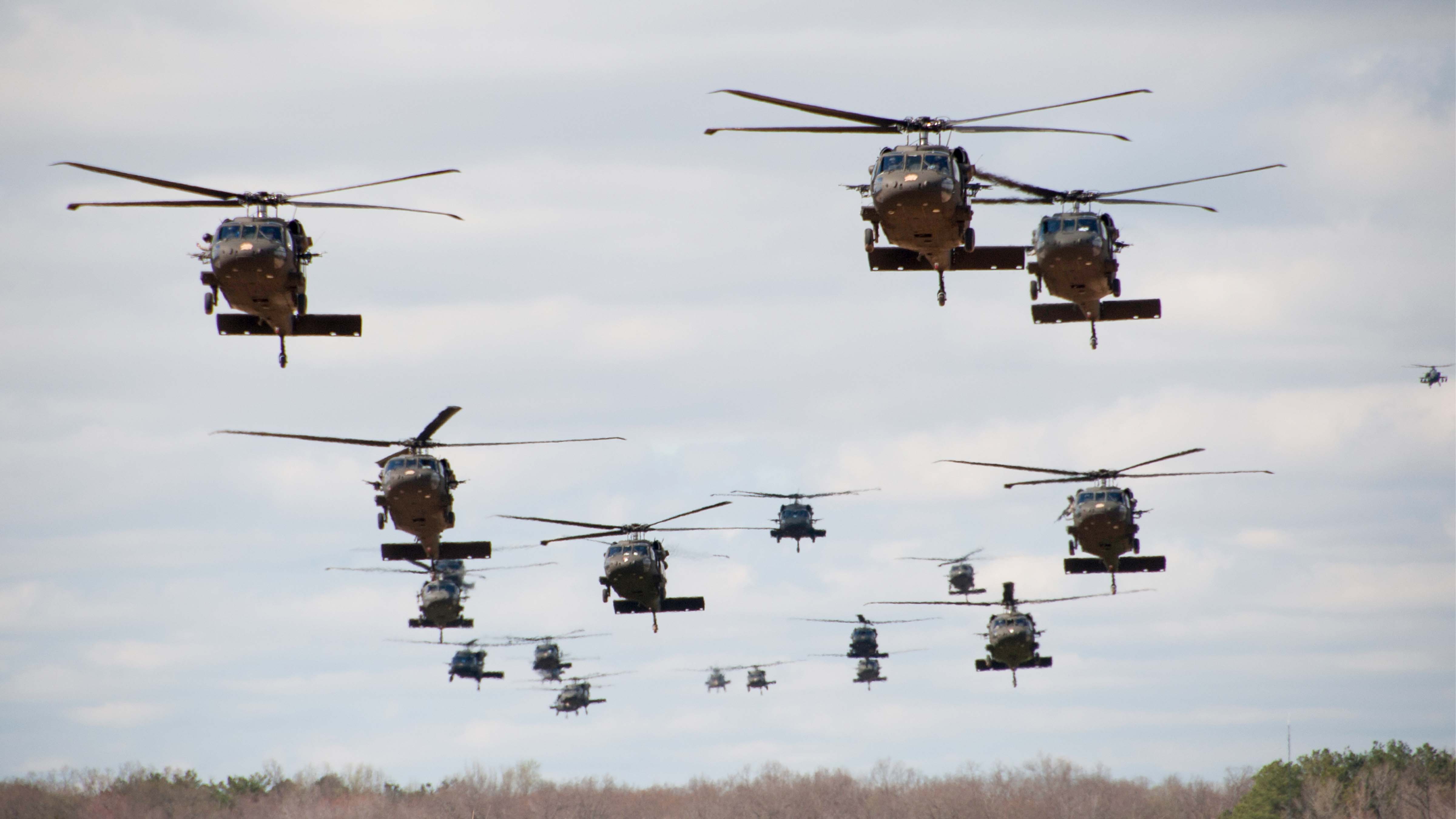

The 101st Combat Aviation Brigade will deploy to the Middle East in early February to support ongoing operations against the Islamic State group. Approximately 2,000 air assault soldiers will ship overseas to take over “all aviation-related missions for the Joint Task Force” already there. The elements of the 101st will replace those from the 10th Mountain Combat Aviation Brigade.
According to Capt. Andrew Lightsey, an Army spokesperson, the nine-month deployment will be in support of units in the U.S. Central Command area of operations in the Middle East, which is primarily focused on northern Iraq and Syria.
This deployment comes on the heels of a year-long work-up for long-range, large-scale air assault operations that enabled the 101st to deliver a brigade-sized element up to 500 nautical miles in one period of darkness.
“Over the past year, we’ve done multiple iterations of [Joint Readiness Training Center] rotations getting prepared for this localized training and air assaults initiative of not only the [Combat Aviation Brigade], but the division. Moving with the idea where we could move the whole division, that’s what we’re training up towards,” Lightsey said. “So with those two iterations, they’ve been pivotal in helping us develop our training plan to do those long-range air assaults into the [area of operations] when we’re called to do that.”
The training for the deployment started in January 2023 when the brigade delivered troops from Fort Campbell, Kentucky to Fort Johnson, Louisiana — a little over 507 miles, as the crow flies.
“Obviously, the 101st CAB trains to be the best,” Lightsey said. “That includes taking a good look at our people and ensuring we’re flying within their capabilities.”
Typically, the max flight time for a single period is six hours flying under night vision goggles and eight hours during the daytime, Lightsey said, but could not provide specifics on the mandatory downtime between flights, citing operational security, but did say the flight demands can vary depending on mission needs.
The lessons learned from the January 2023 Joint Readiness Training Center rotation showed the 101st they needed to dial in the logistics side of the training to enable long-range, large-scale movements. That includes coordinating with forward arming and refueling points along the long flight path.
“The logistical piece is a big factor. With our low decisions, there’s a lot of time in the background planning for that. Then the train-up for the crews and pods themselves, being able to calculate your fuel, airspeeds, and how long you can go,” Lightsey said. “Including the mental and physical part of that — not trying to overfly yourself.”
Lightsey said it’s not a new capability but one they have recently focused on over the past two years. Task & Purpose covered the 101st Airborne Division’s 2nd Brigade when they were at Fort Johnson, Louisiana, for a Joint Readiness Training Center rotation testing a new deception operation based on lessons learned from the war in Ukraine.
The 101st CAB will not deploy with the latest next-gen weapons, the M7 and M250, due to the Army still testing the combat capabilities and durability of the weapon systems.
“We look forward to getting there and helping the joint task force in any way they want,” Lightsey said. “But we plan to work with our partner countries as much as possible as soon as we arrive in country.”
The latest on Task & Purpose
- Storied Marine infantry battalion to be transformed into Littoral Combat Team
- Soldiers are turning to social media when the chain of command falls short. The Army sees it as a nuisance.
- Marine recruit uniforms were photoshopped on at boot camp
- Army doctor pleads guilty on first day of trial in largest military abuse case
- Air Force ‘standards update’ includes more inspections and review of ‘waivers and exceptions’
